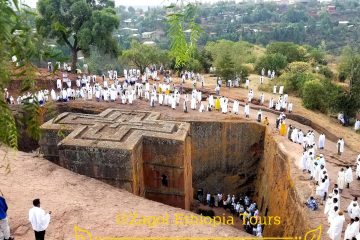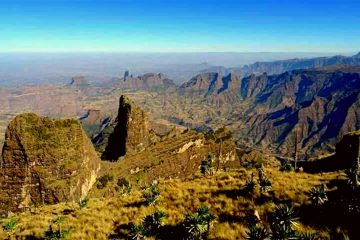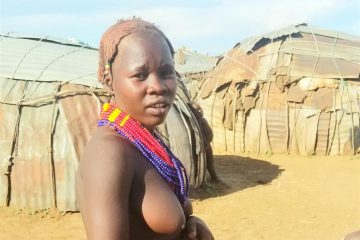Enkutatash (Ethiopic እንቁጣጣሽ) is the first day of the New Year in Ethiopia. It occurs on Meskerem 1 on the Ethiopian calendar, which is 11 September (or, during a leap year, 12 September) according to the Gregorian calendar.
The Ethiopian calendar is based on the Coptic calendar, which was fixed to the Julian calendar in 25 BC by Emperor Augustus of Rome with a start date of 29 August J.C., thus establishing the New Year on this day. The date marks the approximate end of the “rainy season”. It has also been associated traditionally with the return of the Queen of Sheba to Ethiopia following her visit to King Solomon in Jerusalem in ca. 980 BC.
Large celebrations are held around the country, notably at the Ragual Church on Entoto mountain.
According to InCultureParent, “after attending church in the morning, families gather to share a traditional meal of injera (flat bread) and wat (stew). Later in the day, young girls donning new clothes, gather daisies and present friends with a bouquet, singing New Year’s songs.” According to the Ethiopian Tourism Commission, “Enkutatash is not exclusively a religious holiday. Modern Enkutatash is also the season for exchanging formal new year greetings and cards among the urban sophisticated – in lieu of the traditional bouquet of flowers.”
The Ethiopian counting of years begins in the year 8 of the common era. This is because the common era follows the calculations of Dionysius, a 6th-century monk, while the non-Chalcedonian countries continued to use the calculations of Annius, a 5th-century monk, which had placed the Annunciation of Christ exactly 8 years later. For this reason, on Enkutatash in the year 2016 of the Gregorian calendar, it became 2009 in the Ethiopian calendar.




